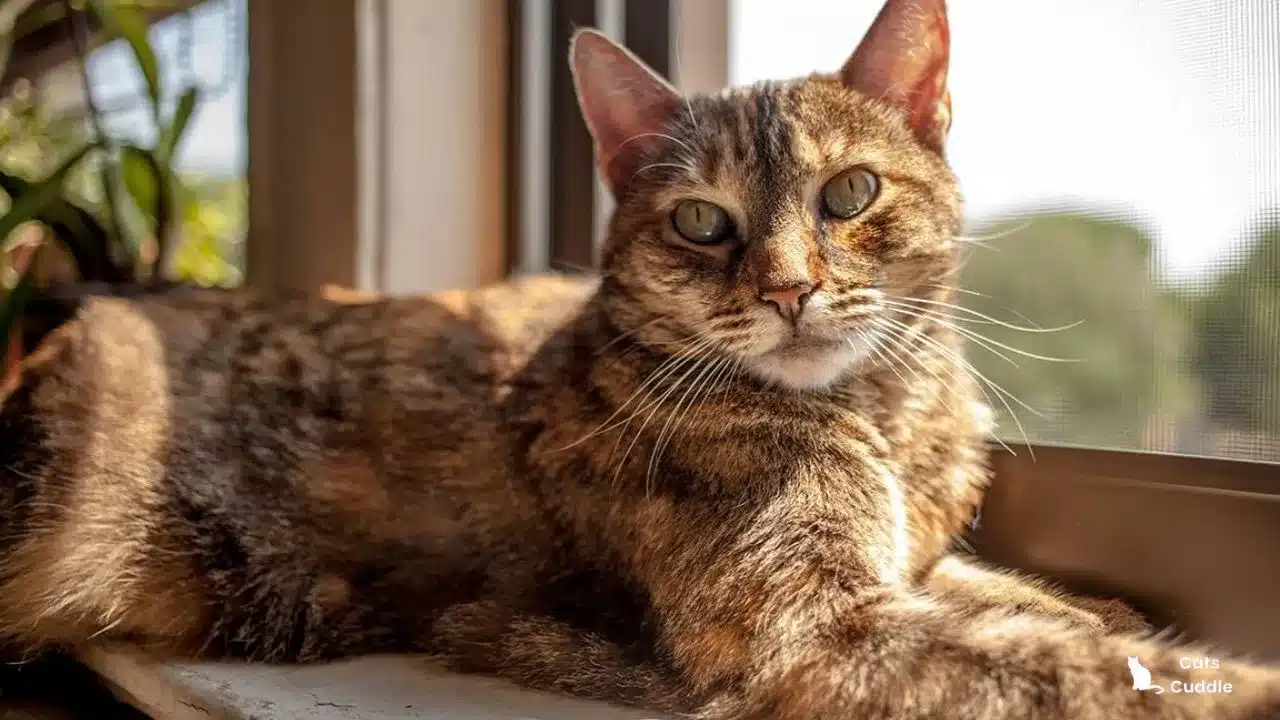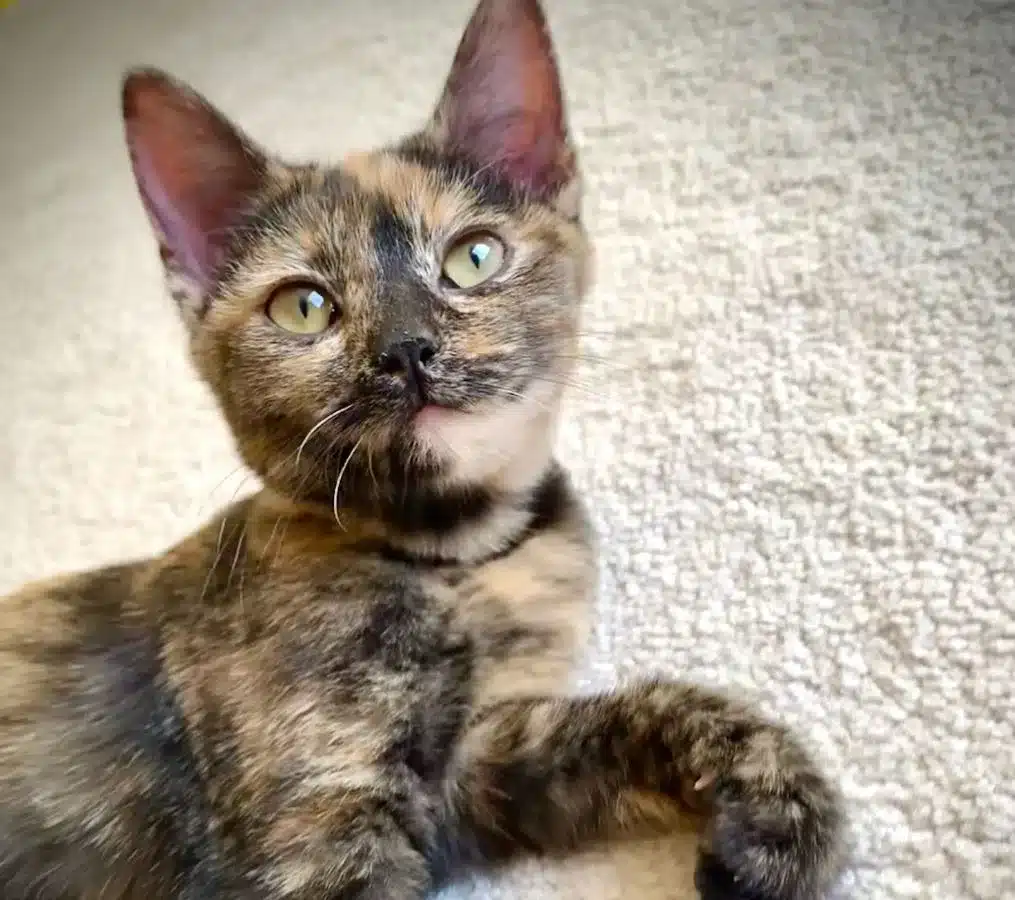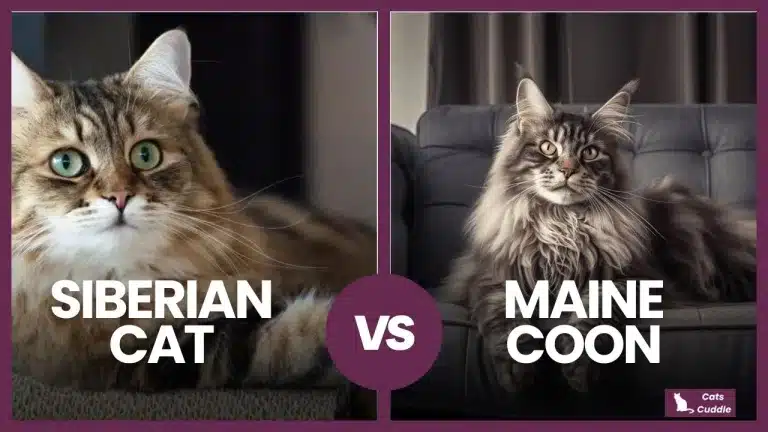Torbie Cat: History & Origin, Personality, Care [2024]
If you’ve ever found yourself lost in the mesmerizing swirls and patches of a cat’s coat, wondering just what kind of feline beauty you’re beholding, you’re not alone. Torbie cats, with their unique blend of tortoiseshell and tabby markings, are a feast for the eyes and a puzzle for the curious mind.
But what exactly makes a Torbie a Torbie, and why are cat enthusiasts so captivated by them? In this guide, we have described everything you need to know about Torbie cats, shedding light on their characteristics, care needs, and the sheer joy they bring into our lives.
Torbie cats, with their unique mix of tortoiseshell and tabby markings, are cherished for their stunning coats and vibrant personalities. While their origins are a natural genetic marvel, understanding their care needs is key to their well-being, making them delightful companions for those who cherish their distinctive beauty and spirited nature.
What is a Torbie Cat?
A Torbie cat is where the whimsy of nature’s palette meets the feline world’s elegance. The term “Torbie” is a delightful mash-up of “tortoiseshell” and “tabby,” indicating a cat that possesses the best of both worlds – the mottled, multi-hued beauty of a tortoiseshell, with the signature stripes or whirls of a tabby. But don’t mistake them for your average household cat; Torbies are a unique spectacle of feline artistry, each with a coat as unique as a fingerprint.
Originating from a colorful lineage, Torbie cats don’t belong to a specific breed; rather, they’re defined by their coat pattern. This distinction is crucial for understanding their place in the cat world – it’s not about pedigree but about the distinct look that captures hearts.
Distinguishing between Torbie, Tortoiseshell, and Tabby can be a delightful challenge. While Tortoiseshells boast a blend of black, orange, and sometimes cream without a pattern, and Tabbies are known for their “M” marked foreheads and striped patterns, Torbies stand out with their intricate mix of the two, showcasing patterns that are as unpredictable as they are beautiful.
History & Origin
The Torbie cat, a blend of tortoiseshell and tabby, doesn’t hail from a specific locale or point in history. Instead, its origins are a delightful quirk of feline genetics. The term “Torbie” itself is a modern creation, coined by cat enthusiasts to describe cats that exhibit both the mottled, multi-hued coat of tortoiseshells and the distinctive markings of tabbies.
This unique combination is the result of genetic variation, with the tortoiseshell pattern emerging from the complex interplay of genes on the X chromosome, and the tabby pattern stemming from dominant genetic markers that dictate striping or whorling.
Unlike breeds with a documented lineage, the Torbie’s history is intertwined with the domestic cat’s journey alongside humans, stretching back thousands of years.
These cats were not bred for their distinctive coats but rather emerged naturally over time, as cats spread across the globe with human settlers. Today, Torbies are celebrated for their unique beauty and spirited personalities, embodying the rich genetic tapestry of the domestic cat.
Characteristics of a Torbie Cat
Physical Attributes
When you gaze upon a Torbie cat, you’re not just looking at a pet; you’re beholding a living, breathing masterpiece. The coat of a Torbie is its most glorious feature, with colors swirling and blending in ways that would make a painter envious. These cats wear their mixed heritage proudly, sporting the classic tabby stripes or swirls set against a tortoiseshell’s rich, variegated backdrop. Their coats can shimmer with shades of orange, black, brown, and even silver, making each Torbie a unique spectacle.
Size and weight in Torbie cats can vary as much as their coat patterns, primarily because they’re not a breed-specific trait but a coloration found across many breeds. However, they tend to fall within the average domestic cat range, with their eyes sparkling with intelligence, often reflecting hues of green or gold that complement their luxurious coats.
Personality
But Torbie’s allure isn’t just skin deep. These cats are known for their dynamic personalities, blending the best feline traits into companions that are as captivating in spirit as they are in appearance. Torbies inherit the affectionate, playful nature of tabbies with the fiercely independent streak of tortoiseshells, making them both delightful companions and noble sovereigns of their domain.
Living with a Torbie cat means embracing unpredictability in the best possible way. They can be cuddly and affectionate one moment, then fiercely independent the next, always keeping their human companions on their toes. Their playful nature makes them excellent family pets, capable of forming strong bonds with those who treat them with the respect and admiration they demand and deserve.
Health and Care
Health Concerns
While Torbie cats dazzle with their external beauty, it’s essential to peer beneath the surface and understand their health needs. Thankfully, Torbies are generally as hearty as their feline cousins, with no specific health issues tied to their unique coloration. However, they share common genetic predispositions with the breeds they belong to, making it important for owners to stay informed and vigilant.
Regular veterinary check-ups are your first line of defense in keeping your Torbie healthy and thriving. Certain conditions like dental diseases, obesity, and age-related issues can affect them, just as they would any cat. By maintaining a close relationship with your vet, you ensure that your Torbie receives the preventative care they need, along with timely interventions for any arising health concerns.
Diet and Nutrition
Feeding a Torbie cat isn’t just about satisfying hunger; it’s about nurturing their overall well-being and keeping their coat as vibrant as their personality. A balanced diet rich in high-quality proteins and essential nutrients is key. Whether you opt for dry, wet, or a mix of both types of food, ensuring it’s formulated to meet the needs of your cat’s age, size, and activity level is crucial.
Treats can be a delightful addition to their diet, but moderation is the name of the game to prevent obesity. And let’s not forget about water – fresh, clean water should always be readily available to help maintain their health and hydration levels.
Grooming Needs
Torbie cats’ unique coats require special attention to keep them looking their best. Regular grooming sessions not only help manage shedding and prevent matting but also provide a wonderful opportunity to strengthen your bond. Brushing a couple of times a week with the right tools can keep their fur smooth and reduce hairballs.
While their grooming needs aren’t overly demanding, paying attention to their nails, ears, and teeth is also part of a comprehensive care routine. Keeping nails trimmed and ears clean, along with regular dental care, will ensure your Torbie not only looks great but feels great too.
Frequently Asked Questions (F.A.Q.)
Are Torbie cats rare?
While Torbie cats are not as common as some other coat patterns, they are not exceedingly rare. Their unique blend of tortoiseshell and tabby markings sets them apart, making them a special find for cat lovers. The rarity can vary based on the specific colors and patterns of their coat, but Torbies can be found in various breeds and mixes, enhancing their availability.
Can Torbie cats be male?
Torbie cats are predominantly female due to the genetic link between coat color and sex chromosomes. However, male Torbies are not impossible but are extremely rare. These males are usually sterile and have a genetic anomaly, such as XXY chromosomes, allowing them to inherit the tortoiseshell or calico pattern typically reserved for females.
How do I know if my cat is a Torbie?
Identifying a Torbie cat involves looking for the unique combination of tortoiseshell and tabby markings. Look for a coat with a mix of solid and striped patterns, incorporating colors like orange, black, and brown. The presence of tabby striping, especially on the legs, face, and torso, amidst the tortoiseshell mottling, is a telltale sign your cat is a Torbie.
Do Torbie cats have specific health problems?
There are no health problems specifically associated with the Torbie coat pattern. Like all cats, their health largely depends on their breed, genetics, lifestyle, and care. Regular veterinary check-ups and a healthy lifestyle are crucial for any cat, including Torbies, to live a long, healthy life.
What breeds can be Torbies?
Torbie is not breed-specific; it’s a coat pattern that can appear in various breeds and mixed-breed cats. Any breed that can have tabby and tortoiseshell patterns can potentially have Torbie cats. This includes common breeds like the American Shorthair, Maine Coon, and British Shorthair, among others.
Wrapping Up
Torbie cats are a dazzling blend of tortoiseshell and tabby, making them a unique and sought-after companion for cat enthusiasts. Their captivating coats, spirited personalities, and loving nature make them a joy to have in any home. Understanding their care needs, health considerations, and the best ways to engage with them can ensure a happy and fulfilling life for both you and your Torbie.



![Munchkin Cats Breed Guide: History, Personality, Care [2024]](https://catscuddle.com/wp-content/uploads/2024/03/Munchkin-Cats-Breed-Guide-768x575.webp)
![Dilute Tortie – What Makes Them So Special? [2024]](https://catscuddle.com/wp-content/uploads/2024/03/Dilute-Tortie-3-768x490.webp)
![What are Magpie Cats? – Breed, Personality, Care [2024]](https://catscuddle.com/wp-content/uploads/2024/03/What-are-Magpie-cats-768x441.webp)
![Munchkin Cat Life Expectancy: How Long Do They Live? [2024]](https://catscuddle.com/wp-content/uploads/2024/03/Munchkin-Cat-Life-Expectancy-768x512.webp)
![How Much Does a Munchkin Cat Cost? [2024]](https://catscuddle.com/wp-content/uploads/2024/03/How-Much-Does-a-Munchkin-Cat-Cost-768x510.webp)
